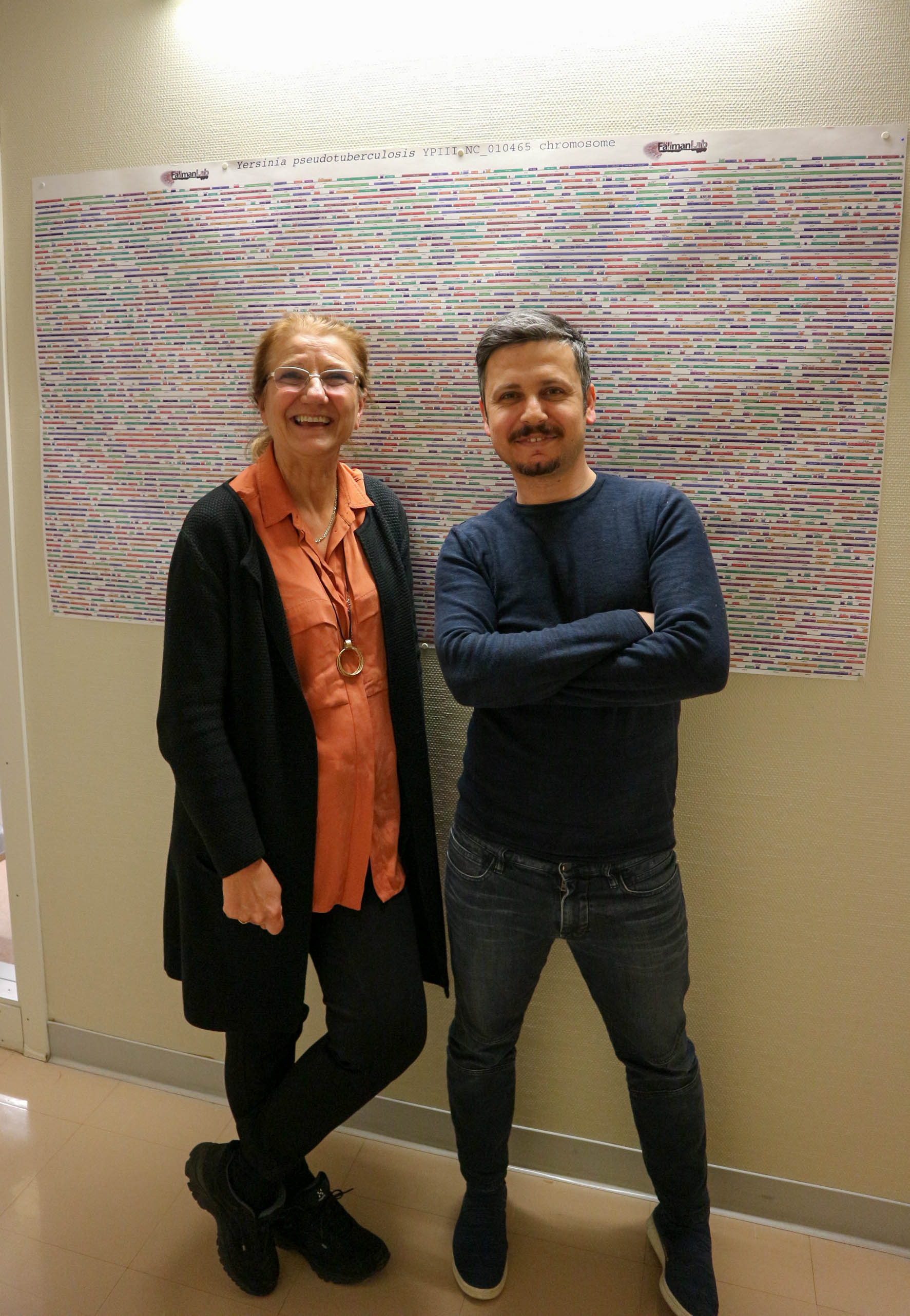Collaboration between MIMS & FIMM: RNA Atlas of Human Bacterial Pathogens Uncovers Stress Dynamics Linked to Infection
Researchers at MIMS, Umeå, and FIMM, Helsinki, have investigated the transcriptome of 32 diverse bacterial pathogens under 11 host related stress conditions. The research revealed that diverse bacterial pathogens have common responses to similar stresses to a certain extent but mostly employ their unique repertoire with intersections between different stress responses. The findings have been combined into a paper currently available as a pre-print on BioRxiv.


In this article, the researchers from MIMS; Kemal Avican, postdoc and junior project manager and Maria Fällman, group leader and assistant director, and Jing Tang, a group leader at FIMM and assistant professor in statistics at the Faculty of Medicine, University of Helsinki, share their insight and experience of the project.
How did the collaboration come about and what does the project involve?
FIMM Group Leader, Jing Tang:
It actually originated from one of the Nordic EMBL Partnership meetings. I gave an introductory talk about my research which Firoj, one of Dr. Fällman’s PhD student, heard. He got in touch shortly afterwards as he realised that our informatics expertise might be able to benefit a project that the Fällman group at MIMS was working on.
My bioinformatician, Jehad (Aldahdooh), then visited MIMS to meet with Kemal and Maria to better understand the data and to determine the kind of database they needed. The project quickly progressed from there.
MIMS Group Leader, Maria Fällman & Kemal Avican, postdoc and junior project leader:
We were working on a project to show how different pathogens react to varying conditions found in the host. We had collaborated with other researchers from Sweden and the UK to gather these pathogens and then create conditions that mimicked, for example, the gut, stomach, liver, and mouth. We then monitored the pathogens to see what kind of response these different conditions provoked.
We wanted to share our results with the wider research community via an online PATHOgenex RNA atlas. The atlas could provide vital information to researchers working with these pathogens, such as information on gene expression when these varying conditions are encountered. The atlas would therefore need to display the information we had gathered in an accessible way but also have the right tools with which to interrogate the data depending on the user’s needs. We didn’t have this competence at MIMS but decided to go ahead anyway in the hope we might find someone further down the line to help. This is where the collaboration with Dr. Tang’s group at FIMM comes in.
How did things progress from there?
Kemal Avican:
Jehad initially visited us at MIMS, where we showed him the database that we had started work on and our plans for what we hoped to achieve. He was able to advise us on what was possible and how we could improve what we already had.
Jehad quickly built something that we hadn’t even realised was possible – it was far more sophisticated and with a lot more functionality than we had imagined.
He has since visited us for a second time to complete the PATHOgenex RNA atlas.
Maria Fällman:
Jehad created an extremely nice webpage interface. You can easily search for different conditions and genes, and then alter these conditions depending on what you want to analyse. So, by selecting a specific gene from a species in PATHOgenex, you can see the expression at different conditions. You can also do some clustering of certain of genes and then put the patterns of different types of expression together. Everything is then displayed in a very visual way, which is important.
Jing Tang:
Jehad was able to create something that we feel very nicely solves the needs of Maria’s group.
It’s certainly an ongoing project that is constantly evolving, but for now we have created something that is functioning very nicely and we’re looking forward to the end result.
How do you think the PATHOgenex will benefit researchers?
Maria Fällman:
I think there will be many infection biologists who will be able to use PATHOgenex RNA atlas for launching new projects. PATHOgenex will provide a lot of previously unknown information for them. As it stands, the atlas contains huge amounts of sequencing data on bacterial gene expression in many conditions. The data is also very validated; Kemal was involved in collecting all of the samples, participating in the experimental part at the different labs involved, creating the libraries and analysing the data. Everything has been set up in the same manner, so it’s very ‘clean and solid’ data.
We also hope the PATHOgenex will act as a platform for additional collaborations and help spark lots of publications thanks to its appeal to lots of different researchers. The principles could be applied to statistics, bioinformatics, infection and system biology, and microbiology.
How has the collaboration benefitted you?
Kemal Avican:
Jehad made us realise that we could do so much more than we originally thought. He really expanded our horizons on what was possible from such an RNA atlas. We thought we might just be able to create some heat maps that showed gene expression but we realised we could do a lot more.
Jing Tang:
I think it’s really interesting that, perhaps at first, our research groups don’t appear to have a lot of research in common, given that my group usually works with cancer.
It’s been really exciting to see that by working together we have created something that can be used by a variety of researchers and which also has huge potential for the future.
What are the next steps?
Kemal Avican:
We want to get the PATHOgenex out there and being used by researchers, whilst continuing with its development.
A longer term plan will be to use it to help identify new drug targets for different bacteria. Bacteria need certain gene products to maintain the infection; if we can identify these targets then we can identify the right drugs to fight them.
There are also some genes where we have no idea about the function – this applies to around 20% of the bacterial genome. These are known as ‘hypothetical genes’. We don’t know how they work, but we know they are required for bacterial physiology. We therefore hope that our RNA atlas, along with the help of AI (artificial intelligence), will help provide some clues on where to start with these; if we can see the expression of a gene at a certain condition then this will also indicate its function.
We plan to use AI to look for the genes that we already know about. If we can find their expression pattern and then search for those genes, we might be able to also search for the hypothetical genes that have similar patterns. This would help to tell us what these hypothetical genes might be. For example, if the sequence of a gene is similar to that of one that is already known, then we can say that this hypothetical gene is probably doing the same thing. The sequence might not be identical, but they have the same function, so I think the PATHOgenex could open up a whole new area for researchers working with these hypothetical genes.
Jing Tang:
We plan to help get the RNA atlas as ready as possible so that it can start being used by researchers. As Kemal and Maria point out, there are so many potential uses. It’s been a very nice project to work on as it’s also shown the other areas that our research is relevant to. Hopefully this will lead to more similar collaborative projects for my group.
Findings available as a pre-print
Read the paper, RNA Atlas of Human Bacterial Pathogens Uncovers Stress Dynamics Linked to Infection, Avican, K. et al, on bioRxiv.